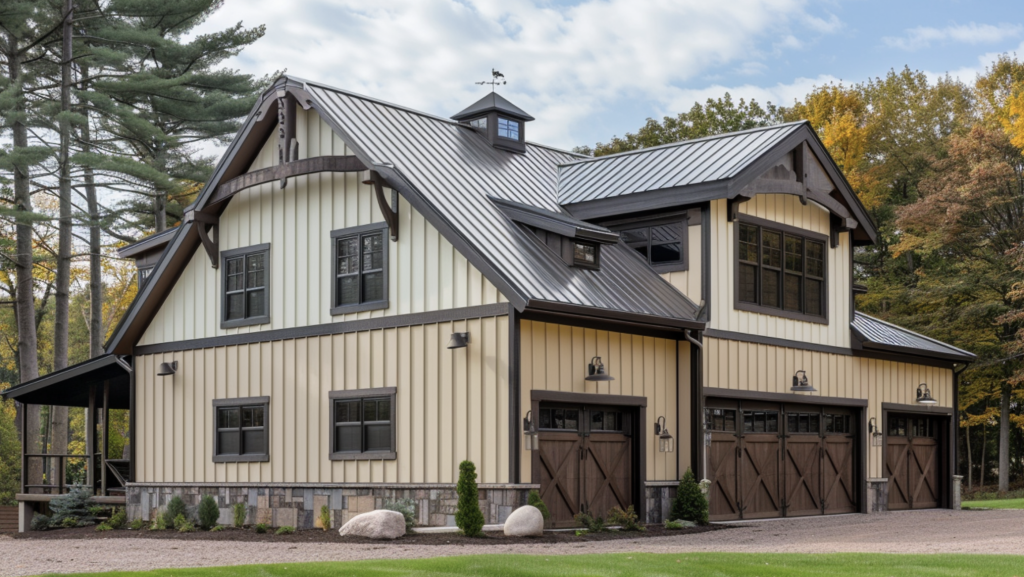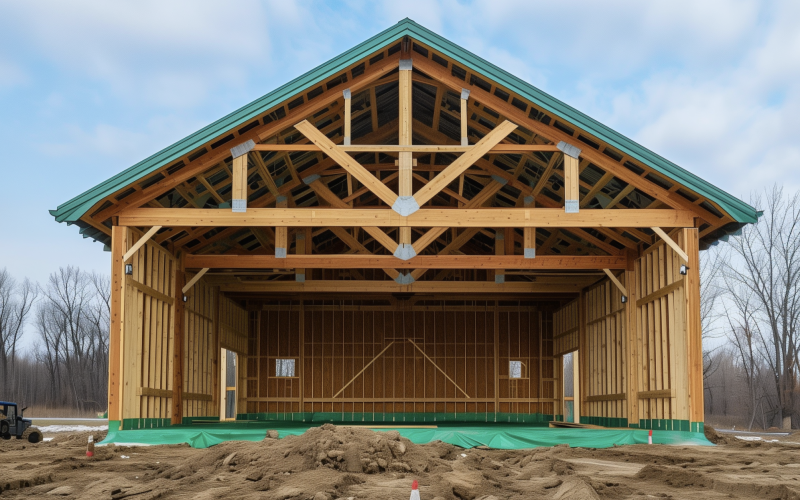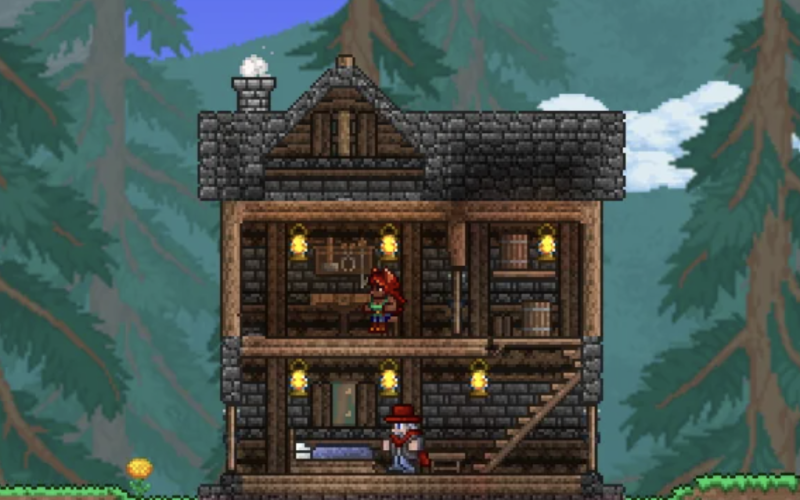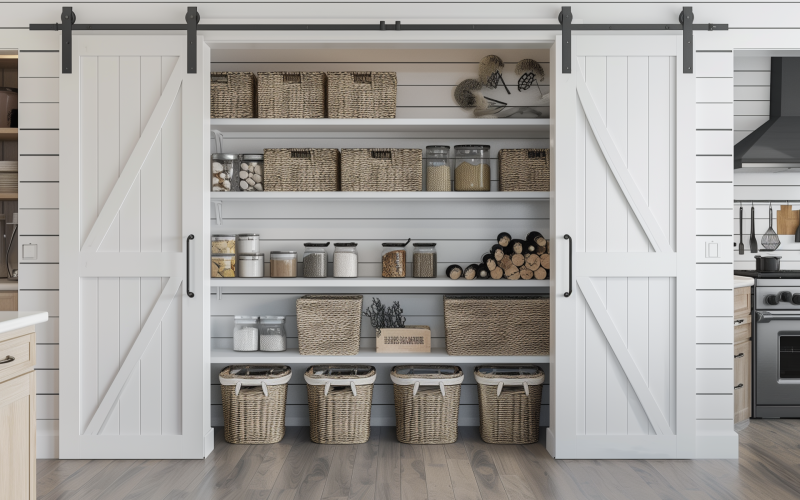Pole barns have become popular for many property owners, but questions about their durability often arise.
It’s natural to wonder how long these structures will last, especially when considering simple pole barn plans for your project.
Many assume that pole barns are less durable than traditional buildings, but that’s not necessarily true.
In fact, with proper care and maintenance, pole barns can stand the test of time. This article will explore the factors that affect a pole barn’s lifespan and provide insights into how you can maximize its durability.
We’ll discuss the average lifespan you can expect, the key elements contributing to longevity, and tips to ensure your pole barn remains sturdy for years to come.
Understanding the Lifespan of a Pole Barn
Typical Lifespan
Pole barns are known for their durability and longevity. On average, these structures can last between 40 to 60 years.
This estimate is based on standard construction practices and normal wear and tear.
However, it’s important to note that, with proper care and maintenance, pole barns can far exceed this typical lifespan.
Many well-maintained pole barns have been known to stand strong for 100 years or more.
Longevity Claims
When discussing pole barn lifespans, industry experts often provide conservative estimates.
This cautious approach helps manage customer expectations and accounts for various factors affecting a building’s longevity.
However, these estimates don’t always reflect the full potential of a well-built and properly maintained pole barn.
Many owners find that their structures remain functional and sturdy well beyond the 60-year mark, especially when they invest in regular upkeep and timely repairs.
Key Factors Affecting Pole Barn’s Lifespan
1. Structural Materials
The materials used in pole barn construction are crucial in determining its lifespan.
Steel cladding, a common choice for exterior walls and roofing, is designed to withstand harsh weather conditions and resist wear over time.
Many manufacturers offer up to 40 years of warranties on their steel cladding products, showcasing their confidence in the material’s durability.
The structural components, such as trusses and purlins, are also engineered for long-term stability, contributing to the overall longevity of the building.
2. Post-Treatment and Installation
The wooden posts that form the foundation of a pole barn are often considered the most vulnerable components.
However, modern treatment methods have significantly improved their resistance to rot and decay.
These posts are typically pressure-treated with preservatives that help them withstand moisture and pest damage.
Additionally, many builders now set the posts in concrete, which enhances their stability and provides an extra layer of protection against ground moisture.
This method can greatly extend the lifespan of the posts and, by extension, the entire structure.
3. Design and Construction Standards
Adherence to the International Building Code (IBC) and other industry standards is crucial for ensuring pole barns’ structural integrity and longevity.
These guidelines cover various aspects of construction, including load-bearing capacities, wind resistance, and material specifications.
Over the years, these standards have evolved, incorporating new research and technologies.
As a result, modern pole barns are often built to higher specifications than their predecessors, potentially increasing their expected lifespan.
Maintenance and Upkeep of Pole Barn

Regular Inspections
Regular inspections are essential to maximize the lifespan of a pole barn.
Owners should check the wooden posts for signs of rot, decay, or insect damage, especially near the ground level where moisture can accumulate.
They should also inspect the overall structural integrity of the building, looking for any signs of sagging, leaning, or other structural issues.
Catching and addressing problems early can prevent minor issues from becoming major structural concerns.
Preventive Measures
Taking proactive steps can significantly extend a pole barn’s lifespan. Post protectors or sleeves can provide extra protection against moisture and ground-level decay.
Ensuring proper drainage around the building is also crucial.
Good water management prevents excessive moisture from damaging the foundation and lower portions of the structure.
Regularly cleaning gutters and downspouts and maintaining proper grading around the building can help prevent water-related damage.
Upgrading Materials
As a pole barn ages, certain components may need replacement or upgrading. Roofing and siding materials, in particular, may need attention over time.
When renovating or replacing these elements, consider using modern materials with improved durability and weather resistance.
These upgrades can breathe new life into an older structure and extend its useful lifespan.
Comparisons with Other Building Types
Versatility and Adaptability
One key advantage of pole barns is their versatility. Unlike some traditional building types, pole barns can be easily modified or expanded as needs change.
This adaptability means that a pole barn can serve multiple purposes over its lifetime, from agricultural storage to a workshop or even a residential space.
Adapting the building to new uses can extend its functional lifespan well beyond what might be expected for a more rigid structure.
Cost-Effectiveness
When comparing pole barns to other building types, it’s important to consider their cost-effectiveness.
The initial construction cost of a pole barn is often lower than that of traditional buildings.
The simplified construction process requires less labor and typically takes less time. This efficiency saves money upfront and can lead to a quicker return on investment.
The lower initial cost means that even if a pole barn doesn’t last as long as some more expensive building types, it can still provide excellent value over its lifespan.
Conclusion
The lifespan of a pole barn can be much longer than many expect. While typically lasting 40-60 years, these structures can stand for a century or more with proper care.
The key to longevity lies in quality materials, appropriate construction techniques, and regular maintenance.
Following building codes, using treated posts, and conducting routine inspections can significantly extend your pole barn’s life.
Remember, these versatile buildings can adapt to changing needs over time, making them a cost-effective choice for many property owners.
Whether planning to build a new pole barn or maintain an existing one, focusing on these factors will help ensure your structure stands strong for generations.







